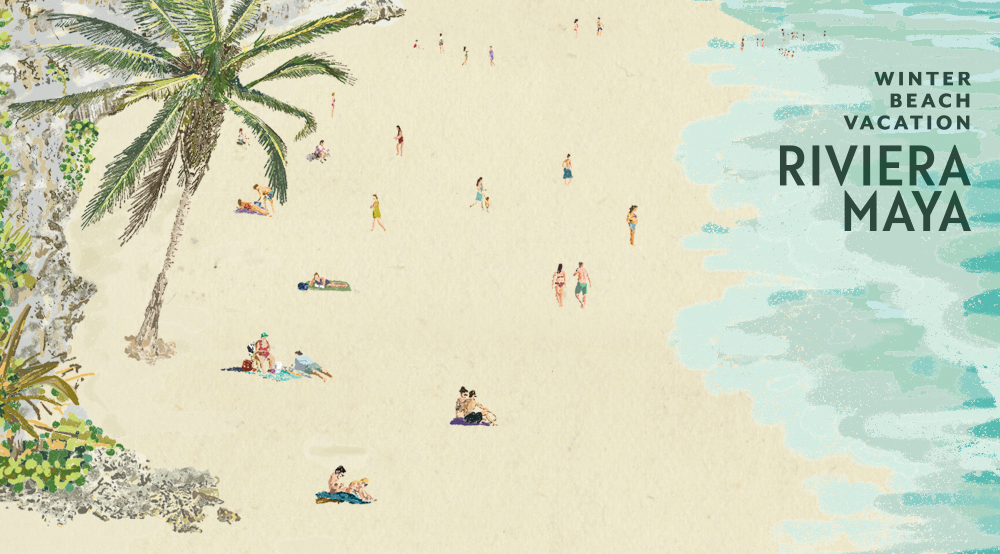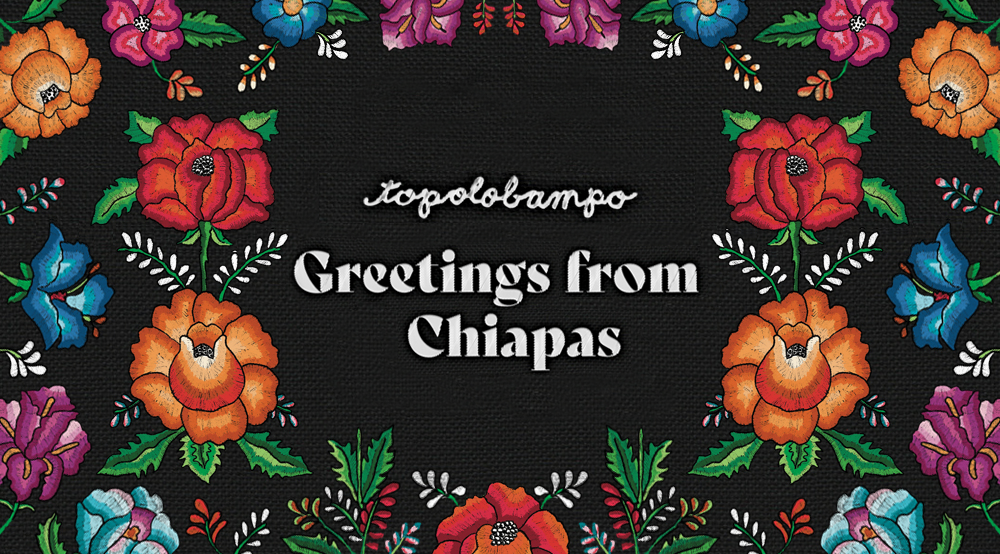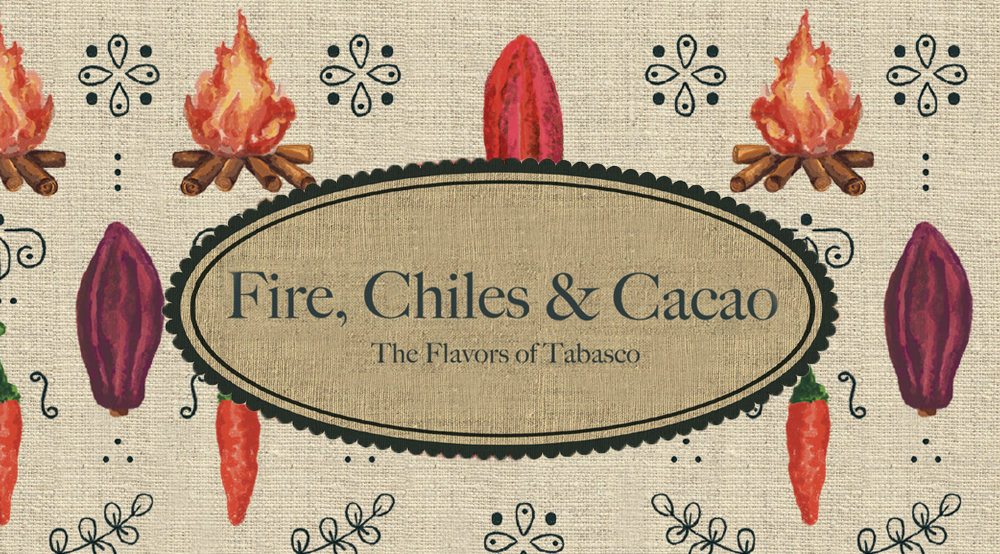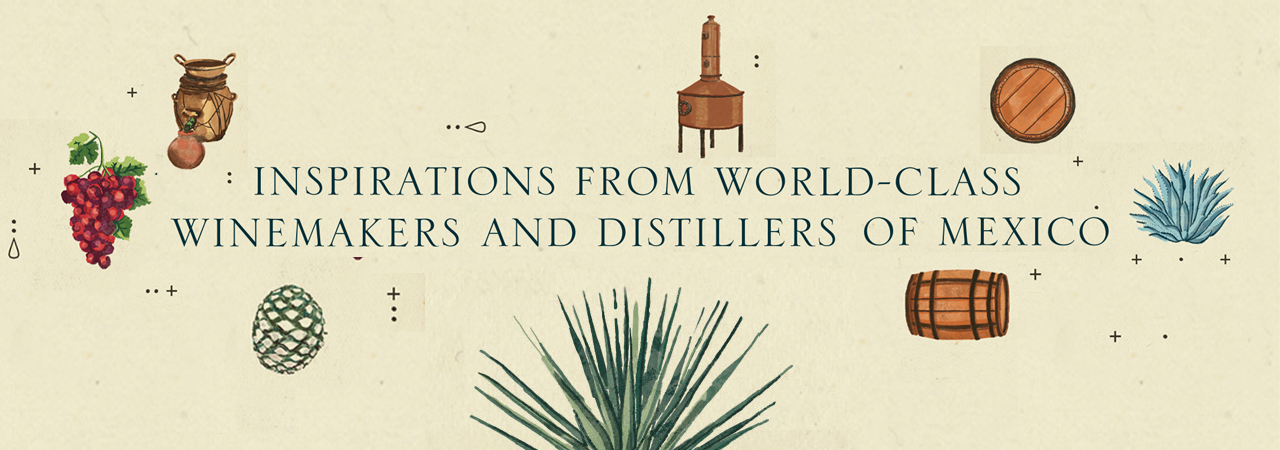The first time I stepped into La Merced Market—now over 40 years ago—I was filled with wonder. Six foot mounds of poblano chiles and purple-streaked garlic, giant-sized displays of ancho chiles cascading from one wide wooden bin down to another, aromatic chorizo and barbacoa wafting from intermittent stalls that proffered tacos, gorditas, huaraches and tlacoyos. The meat stalls offered nose-to-tail butchery more thoroughly than I’d ever seen. And the chicharrón prensado—think of it as the equivalent of our salt pork or pork hock used to flavor dishes—loomed like impenetrable, sweet-smelling walls that blocked sight of the just-plucked chickens and fresh fish just behind. Mercado de La Merced, so sprawling that it engulfs a major subway stop and sixteenth-century church, is still, for me, one of the most wondrous places on earth.
Archives: Topolo Menus
Topolo Goes on Spring Break
At this time of year, it’s no surprise that Cancun, Cabo and Puerto Vallarta lure northerners with their warmth, beautiful sand beaches and azure waters. While good food is abundant in all those seaside destinations, let us introduce you to the taste of some deliciously different coastal spots. From the steamy tropics of Chiapas where plantains are covered in the famous local cheese and simojovel chile to Tabasco’s mango groves where the world’s best chocolate grows alongside street vendor favorites, we are going to take you on an expedition of regional ingredients and cuisine. Strap in, kick off your shoes (metaphorically, of course), and get ready for Spring Break at Topolobampo.
Topolo: The Eras Tour
When Deann and I moved back from Mexico in the mid-‘80s, one of our goals was to introduce folks to both the diversity of Mexican cuisine and the splendor of Mexico City’s restaurants. Nothing with the elegance and sophistication of San Angel Inn or Hacienda de Los Morales—the two top spots at that time— existed here, and I dreamed of creating a restaurant we could grow to match them.
Though I was still quite an inexperienced chef when we opened Topolo in 1989, my first menus explored many of Mexico’s classic seafood dishes—the ones I’d written about in my first cookbook—through a fine-dining lens. And in the starters of those opening menus, I always included Caesar salad. Yes, it was invented in Tijuana, but I included it to offer comfort for those for whom the rest of the menu might be a challenge.
Times have certainly changed, and Topolo has gone through many iterations and garnered many awards, including restaurant of the year from the James Beard Foundation and 13 years of Michelin stars. Topolo chef de cuisine Meagan O’Connor has poured over three decades of changing menus and culled these gems—seen anew through 2025 eyes—to represent our greatest milestones. We’ve even included a nod to Topolo’s most unusual iteration—during COVID—when we packed up the dinner’s mise en place and armed our guests will a how-to video for finishing each course at home.
The Feast of the Seven Moles
Maybe I went too far with the title for this menu. Oaxacans don’t traditionally do a single holiday feast of the seven moles. They leave that seven-dish extravaganza to the Italian-Americans and their fishy festivity.
But, still, serving mole at any time does spell festivity and Oaxaca does festivity better than anywhere else in Mexico. So, since my family and I have spent over three decades celebrating the holidays in Oaxaca, I thought it was perfect to offer a menu at this special time of year that features Oaxaca’s famous seven moles—some in traditional presentations, some in ways that will be new to you.
We’re taking you beyond Oaxaca City’s renowned cuisine to the special preparations of towns—large and small— throughout the state. From Puerto Escondido and their herby, light-green fish mole to the richly spiced black mole of the central valleys, from the Northern Sierra’s red mole studded with tender pozole to a coloradito I learned from a Zapotec cook in Juchitán in the Isthmus of Tehuantepec. Come taste the unparalleled diversity Oaxaca offers us!
Mexico’s Gifts to the World
I wish there was a YouTube video of the dishes that came out of Moctezuma’s royal court kitchen in 1519, when the Spaniards were served their first lavish meal in Tenochtitlan. You know, the kind of YouTube videos you see from every Michelin-starred restaurant—the ones that start with the arrival of pristine produce and meat, capture each step of preparation, and celebrate the over-the-top presentations.
I would like to see the mounds of aromatic herbs and flowers that were delivered each day. How exactly did the beautiful tomatoes and chiles, pumpkin seeds and sunflower seeds look as they were griddle-roasted and ground in stone mortars or metates. Tomatillos would have been a new taste to the Europeans, and avocados too. But I want to know how quickly they had to get peeled avocados to the emperor, so there wasn’t a hint of discoloration.
I know the royal court had a separate kitchen just to prepare the special corn for the emperor’s tortillas and tamales, and to simmer the black (and red and tan) beans for his daily breakfast. I’m sure there was another kitchen for handling the ceremonial chocolate drink perfumed with vanilla. The aroma there must have been incredible.
Though these ingredients are now common the world over, I can’t imagine what it would be like to have tasted them for the first time, as those European mercenaries did at the emperor’s elegant banquet table.
We invite you to adopt a beginners mind, open your taste buds anew and experience Mexico’s Gifts to the world.
MEXICO CITY: Taco Capital of the World
The starting point: Pretty much every dish Mexican cooks know how to make—from simple seafood to
wild game in a complex mole—can be scooped into a tortilla and eaten out of hand. And those tortillas, though made mostly of corn, can be nearly as wide ranging as the fillings. All of which means that tacos are probably more varied and special that you may have imagined.
Early one day in the beginning of 2024, the Topolo team (who have eaten tacos all over Mexico) devoted a concentrated 12 hours in Mexico City to tracking down 13 off-the-tourist-track taquerias and eating 35 of their specialties. It is from that legendary CDMX taco crawl that this menu has grown.
In Mexico, tacos come in a dozen or so categories, some of which you’ll recognize (tacos de carne asada, perhaps), while others (like tacos de guisados or a la plancha) may be new to you. As you adventure through Mexico City with us, we’ll ensure you get to meet some new friends.



